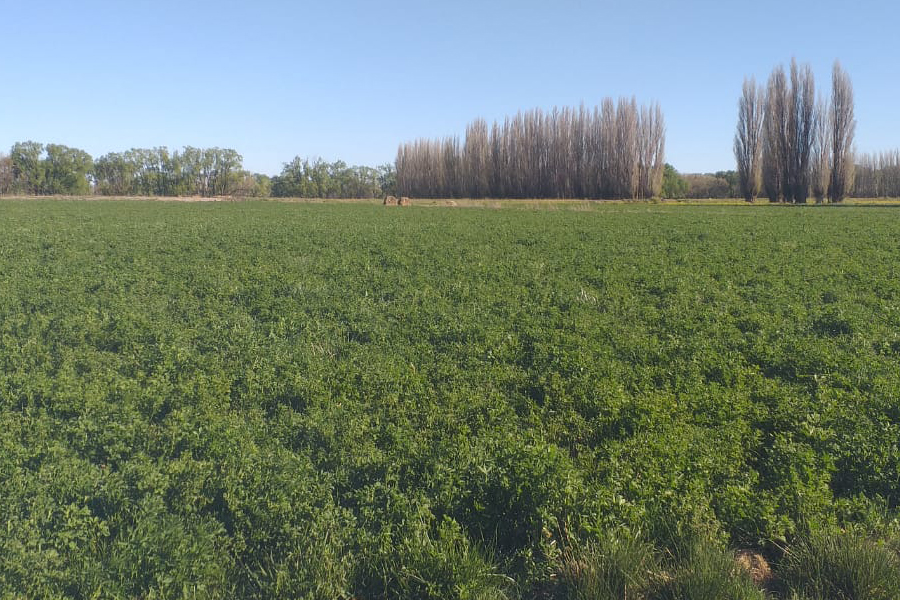Stockbreeding
Our establishment counts on a huge stockbreeding potential, based on a sustainable management of the ecological grazing system and of its natural environment. The animal welfare standards of the European Union are of ordinary use in our property’s daily routine.
The company develops a complete stockbreeding cycle, being its main activities and categories those of rearing, wintering and fattening in the cattle yard. With scheduled mating and calving seasons according to animal category, age and condition, the end product (calves) is destined to the sale or else the product is finished in a feeding corral, using grains and pastures produced within the ranch.
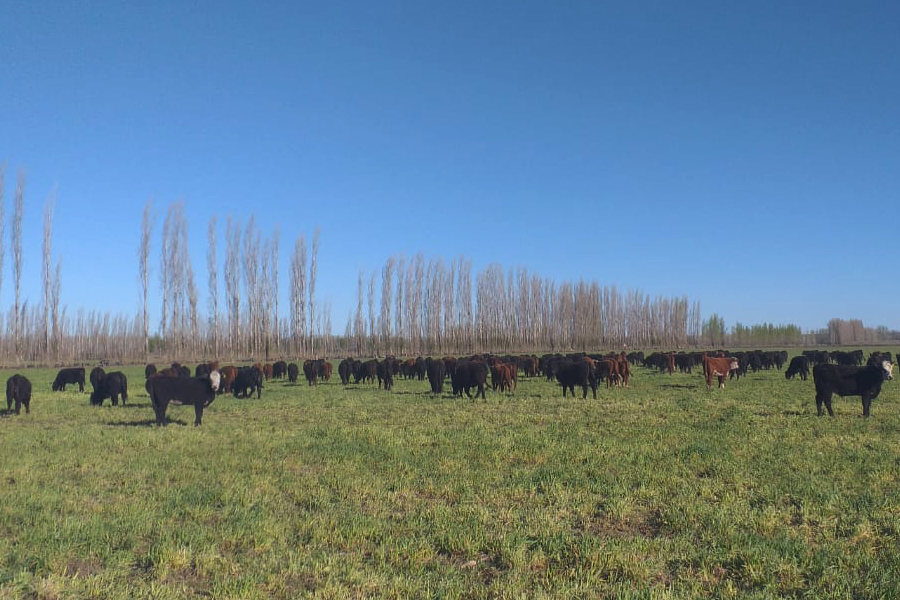
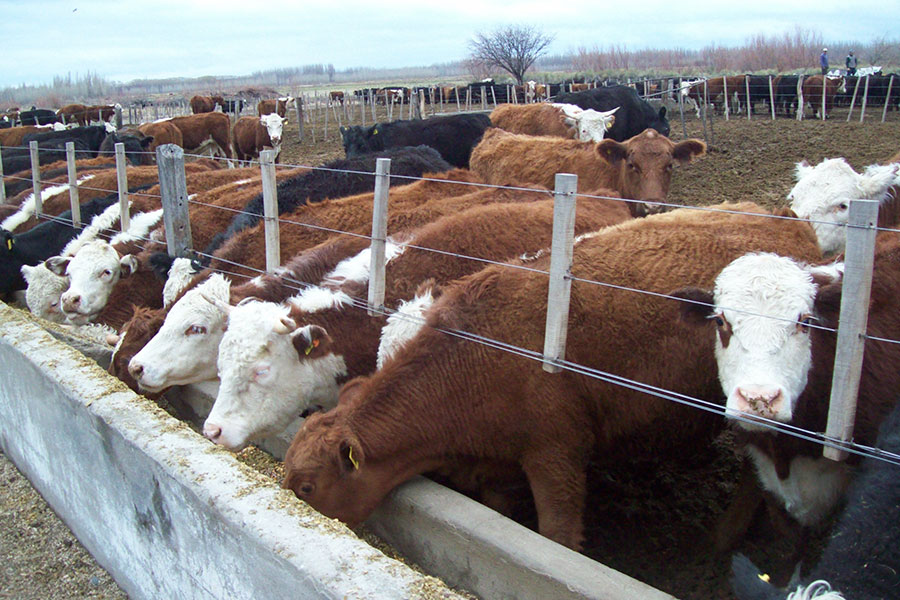
Feed Lot
Cattle entering the establishment for the most part with the rearing and wintering category during the month of July and August the gradual move allowing the movement of personnel and machinery within the premises. Recall that the origin of these animals is located in nearby breeding grounds in the Patagonian steppe where their large areas and wilderness areas is not common view these elements causing stress in animals. In the case of calves and heifers, they are completed within the grazing cycle in March and April with an average weight of 340 kilos. The males, calves and steers, slaughter weighing ranges from 410 to 430 kilos, do not complete their termination field and are confined to early autumn rations made within the facility based on alfalfa and corn kernels with added minerals and vitamin. It has the appropriate facilities in pens, feeders, drinkers, silos to store grain produced on the farm and sheds for the bales used in the preparation of rations. About 1500 animals can now cover this activity within the premises of the farm.
Alfalfa and Associated Pastures
We use crops suitable for the latitude and quality of the soils, assigning specific areas to intensive rotational grazing, and others to the preparation of forage reserves. Said forage reserves are used to feed the cattle or else to directly sell in the Patagonian markets. Currently, an analysis is underway so as to industrialize and give them an added value.
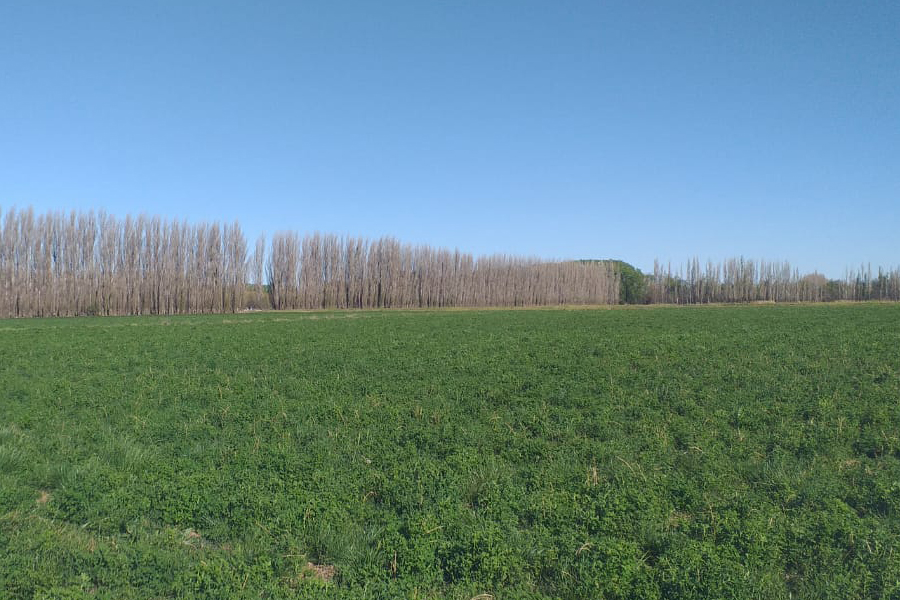
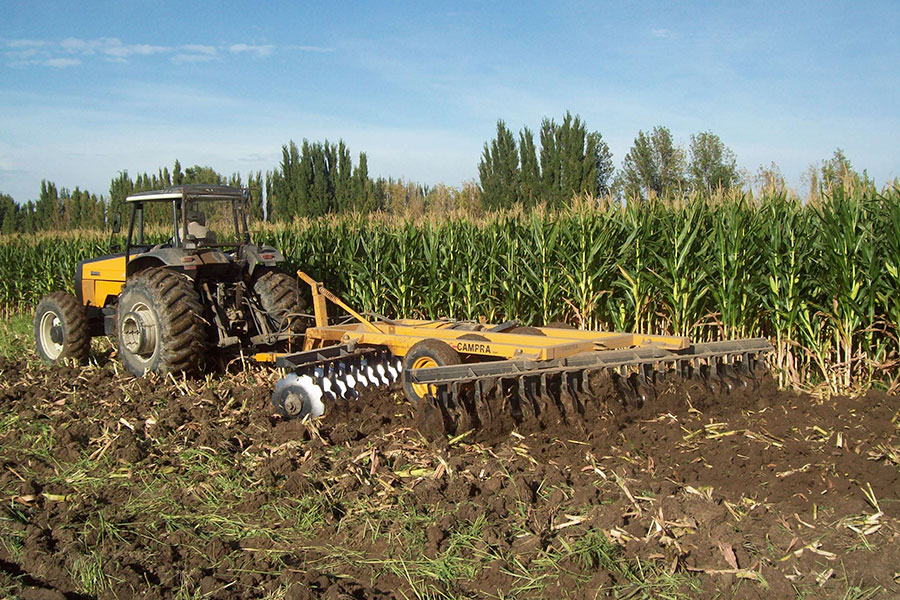
Cereals and Oilseeds
Corn occupies a dominant place in the area sown within our establishment, due to its possible uses in the feeding of cattle, its direct sale in the Patagonian markets, and its use in bio-energy. This last item, together with the soya, forms some of the most interesting challenges in what concerns exploitation of these species.
The production of seeds from crops such as alfalfa, sunflower, pumpkin, tomato, etc., has a high feasibility potential. Its realization will depend on micro- and macro-economic variables.





